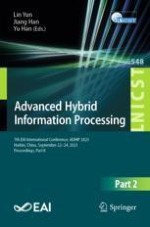This four-volume set constitutes the post-conference proceedings of the 7th EAI International Conference on Advanced Hybrid Information Processing, ADHIP 2023, held in Harbin, China, during September 22-24, 2023.
The 108 full papers presented were selected from 270 submissions and focus on theory and application of hybrid information processing technology for smarter and more effective research and application. The theme of ADHIP 2022 was Hybrid Information Processing in Meta World. The papers are named in topical sections as follows: wireless communication for social information processing, artificial intelligence technology; Mobile education, mobile monitoring, behavior understanding and object tracking; wireless networks for social information processing, image information processing; mobile monitoring, civilian audio and acoustic signal processing.
